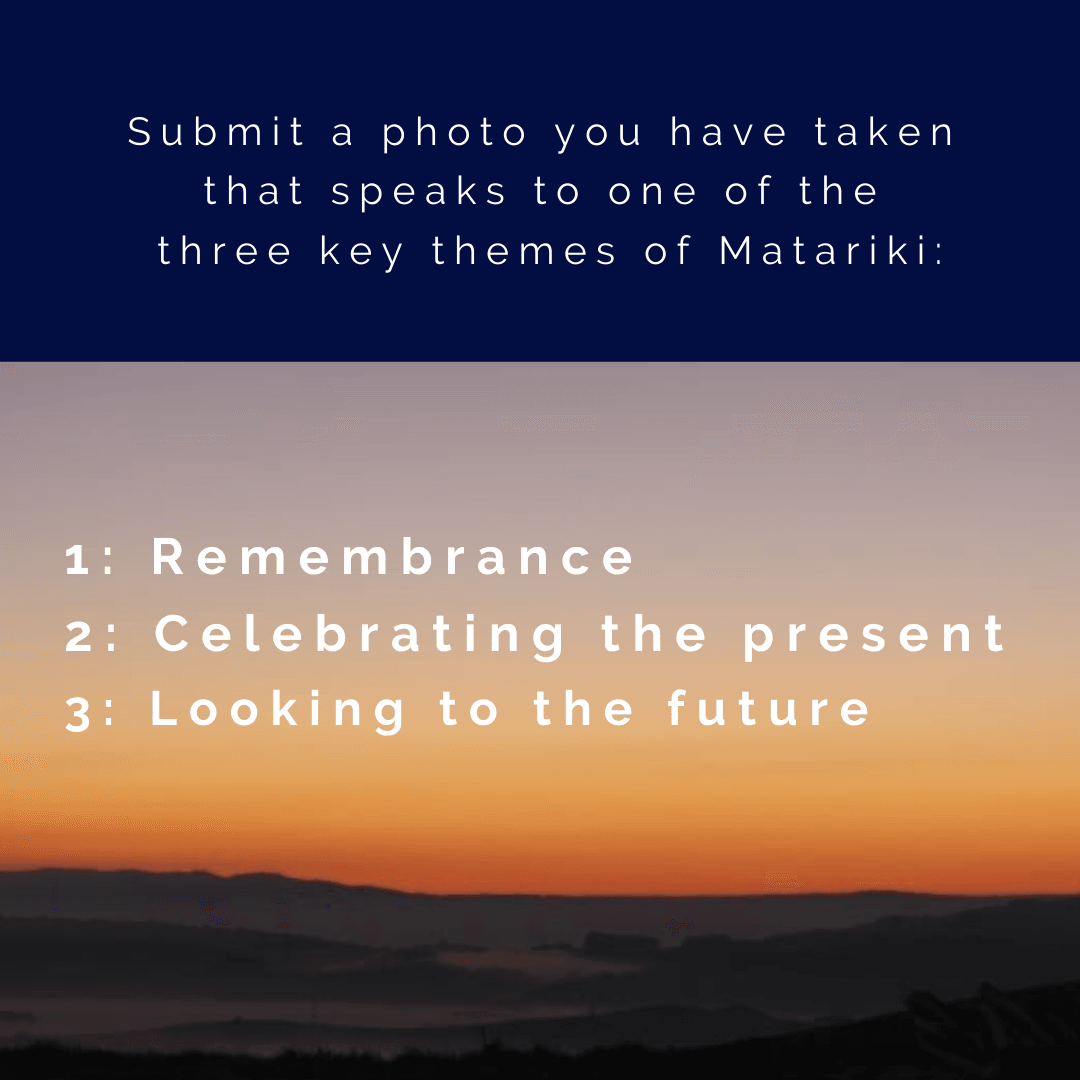Matariki Photographic Exhibition
'Remember the past, celebrate the present and plan for the future'
9 July - 14 August 2022

Drop your work into the gallery by 1st July or email to info@morrinsvillegallery.org.nz
Photo Credit: Auaha Photography
The following is taken from 'Values for Matariki Celebrations'
prepared by Professor Rangi Matamua on behalf of the Matariki Advisory Committee 2021
Remembrance:
The re-appearance of Matariki in the morning sky during mid-winter coincided
with a traditional ceremony called ‘whāngai i te hautapu.’ During this ceremony food was
cooked and offered to the different stars of Matariki while karakia (incantations) were
conducted. The first part of this ceremony was dedicated to the dead of the year, honouring
those who had died since the last rising of Matariki. The names of the dead were called out
during the ceremony and people would weep for their loved ones. One traditional belief states
that Matariki carries the dead of the year across the night sky, and upon the return of Matariki
in the winter sky, the star cluster is released from its burden. When the names of the deceased
were called out, Māori believed the spirits of the dead became stars in the sky. This process
also helped to release the emotional burdens and cultural responsibilities
Māori had with the dead.
Celebrating the present:
Following on from the formal ‘whāngai i te hautapu’ ceremony,
Matariki was a period of celebration and festivities. Communities and whānau would gather
together to give thanks for all the blessings of the past year, and to reconnect with each other.
Mid-winter was a time of rest and relaxation for Māori. The food storage pits and houses were
full, and the busy harvest season was over. Food and feasting was a central element in
Matariki, and people came together to share the fruits of the harvest. Other forms of
celebration included music, dance, art and spending time with one another.
Looking to the future:
Matariki was a time where communities and whānau would come
together to plan for the impending season. They discussed at length their hopes and desires,
concerns and fears and they decided upon how they would approach various activities in the
New Year. It was a time of learning, sharing, discussion and decision making. One of the key
points of discussion during Matariki was the environment, especially the health of the
environment. Māori understood that their lives depended on them maintaining a strong
connection to the physical world and caring for nature.
Key values associated with Matariki and Māori New Year celebrations:
Aroha - Love and respect for one another
Whakamaumaharatanga - Remembrance
Kotahitanga - Unity
Manākitanga - Caring
Tohatoha - Sharing
Mana Taiao - Environmental awareness
Kaihaukai - Feasting
Wānanga - Discussion
Noho tahi - Coming together
Ngākau Atawhai - Kindness
Whakanui - Celebrations
Tuakiritanga - Identity